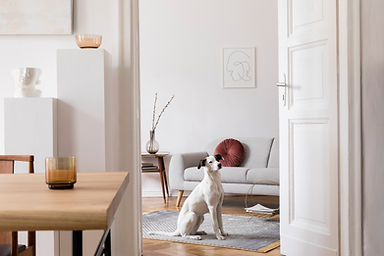
CALL US TODAY
(905) 995-4401
COMMERCIAL PAINTING TIPS
Here are some tips for a successful commercial painting project:
Plan and Prepare:
-
Start with a well-thought-out plan that includes the scope of work, timeline, and budget. Consider any special requirements, such as low-VOC or eco-friendly paint.
-
Schedule the painting project during a time that minimizes disruption to your business operations, such as evenings, weekends, or during holidays if necessary.
Hire Professionals:
-
Engage a reputable commercial painting contractor with experience in similar projects. Check references and past work to ensure they have a track record of quality and reliability.
-
Verify that the contractor is licensed, insured, and bonded.
Choose the Right Paint:
-
Select the appropriate paint type for the surfaces being painted (e.g., interior, exterior, concrete, metal).
-
Consider factors like durability, sheen (e.g., matte, satin, semi-gloss), and color for each area.
Surface Preparation:
-
Properly prepare surfaces by cleaning, sanding, and repairing any cracks, holes, or imperfections. This step is critical for achieving a smooth and long-lasting finish.
-
Remove any loose or peeling paint.
Safety First:
-
Prioritize safety by ensuring that workers have the necessary personal protective equipment (PPE) and that the work area is safe for both employees and customers.
-
Protect adjacent areas, furniture, and equipment with drop cloths, plastic sheeting, or masking tape.
Use High-Quality Materials:
-
Invest in high-quality paints, primers, and other materials. While they may cost more upfront, they can save money in the long run by providing better coverage and durability.
Proper Application Techniques:
-
Follow the manufacturer's guidelines for paint application, including recommended temperature and humidity conditions.
-
Use the appropriate tools, such as brushes, rollers, or sprayers, for the job.
Maintain Consistency:
-
Maintain a consistent application technique, such as consistent roller pressure and overlap, to ensure an even finish.
-
Pay special attention to corners, edges, and trim for a professional look.
Multiple Coats:
-
Apply multiple coats of paint as necessary to achieve the desired color and coverage. Most commercial painting projects require at least two coats.
Drying and Curing:
-
Allow sufficient drying and curing time between coats, as specified on the paint product labels. Rushing this step can lead to problems later on.
Clean-Up:
-
Properly dispose of used paint cans and materials according to local regulations.
-
Clean all equipment thoroughly after each painting session to ensure their longevity.
Final Inspection:
-
Conduct a final inspection to ensure the paint job meets your expectations and quality standards.
Maintain Records:
-
Keep records of the paint colors, brands, and any other relevant information for future touch-ups or renovations.
Communication:
-
Maintain open communication with the painting contractor throughout the project to address any issues or changes promptly.










